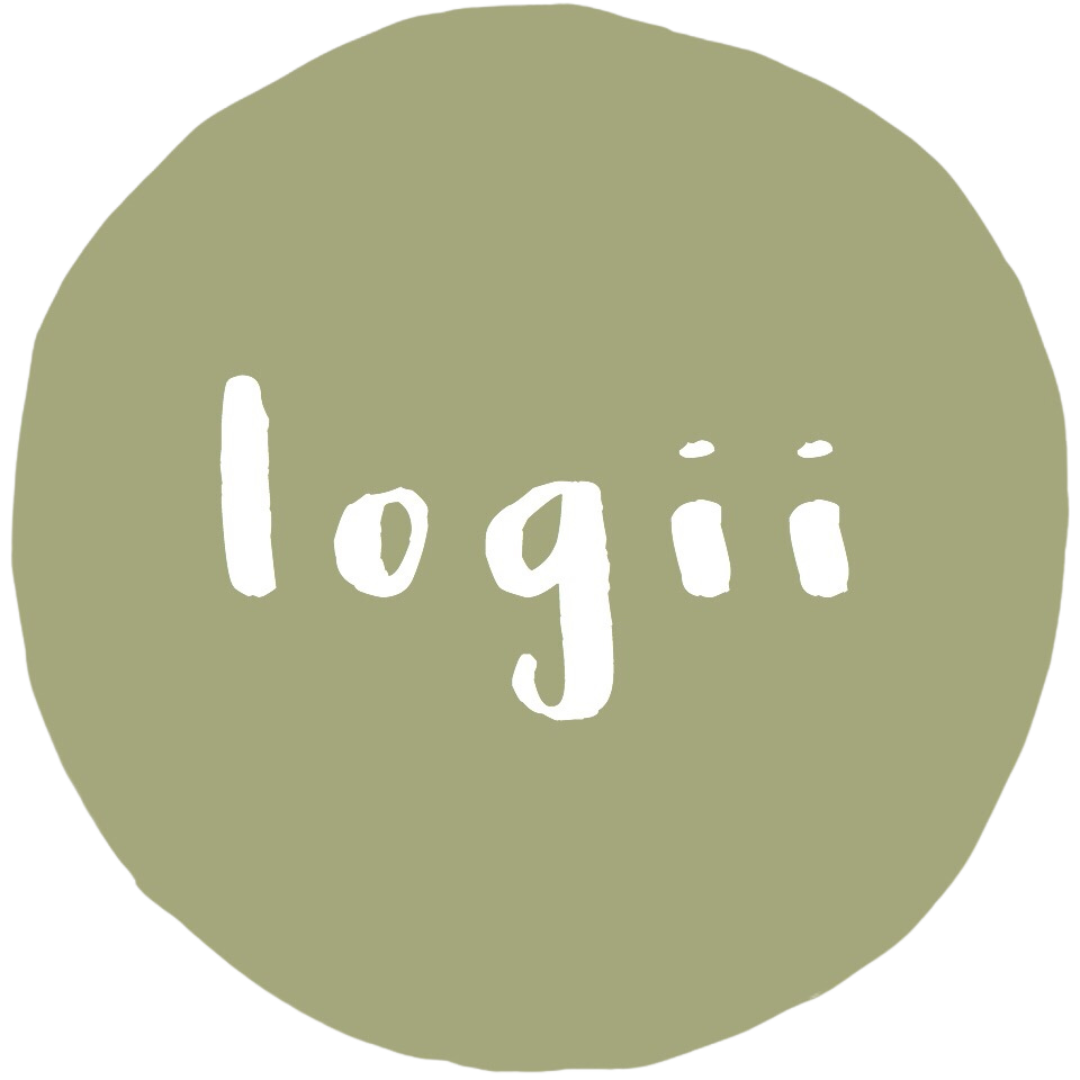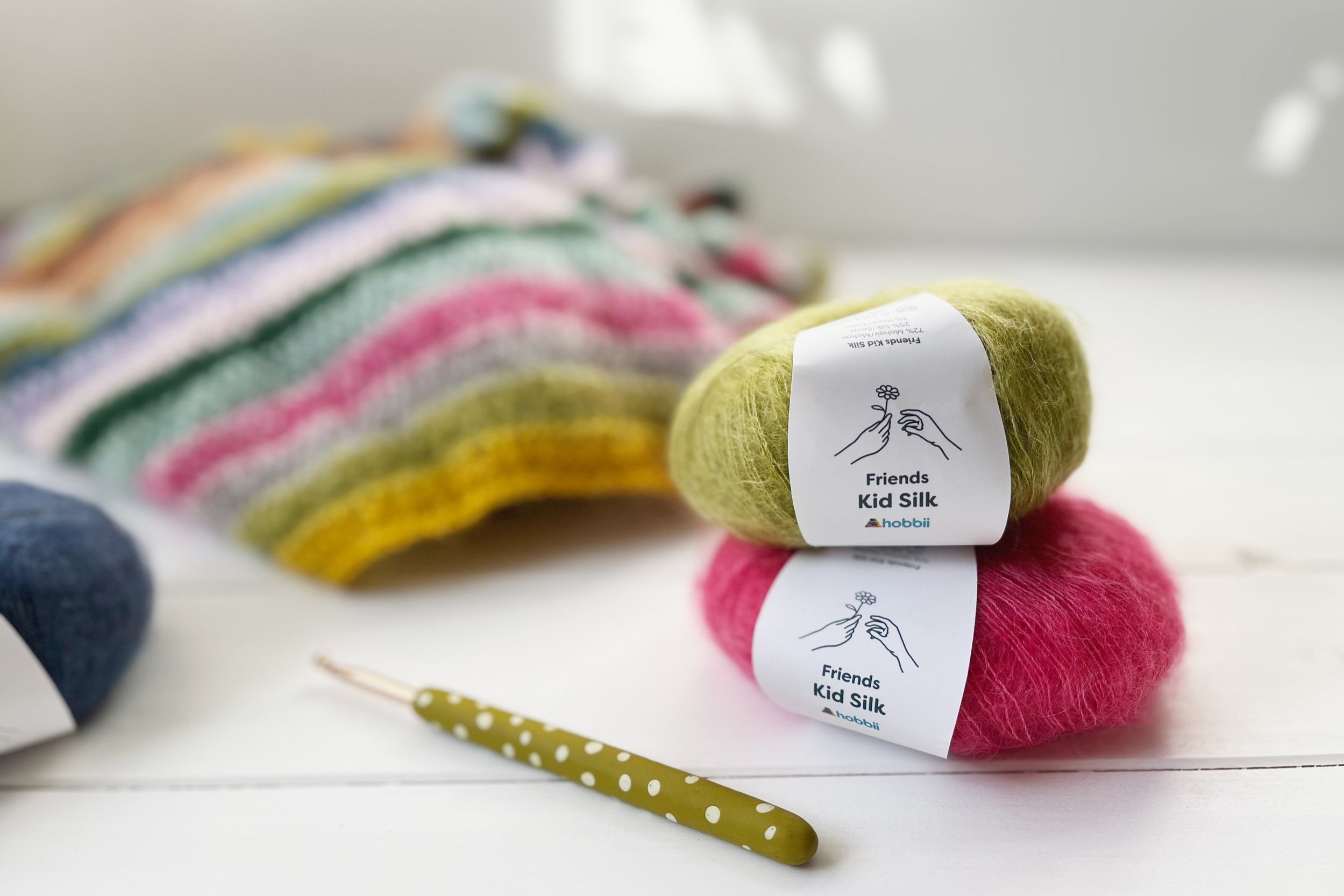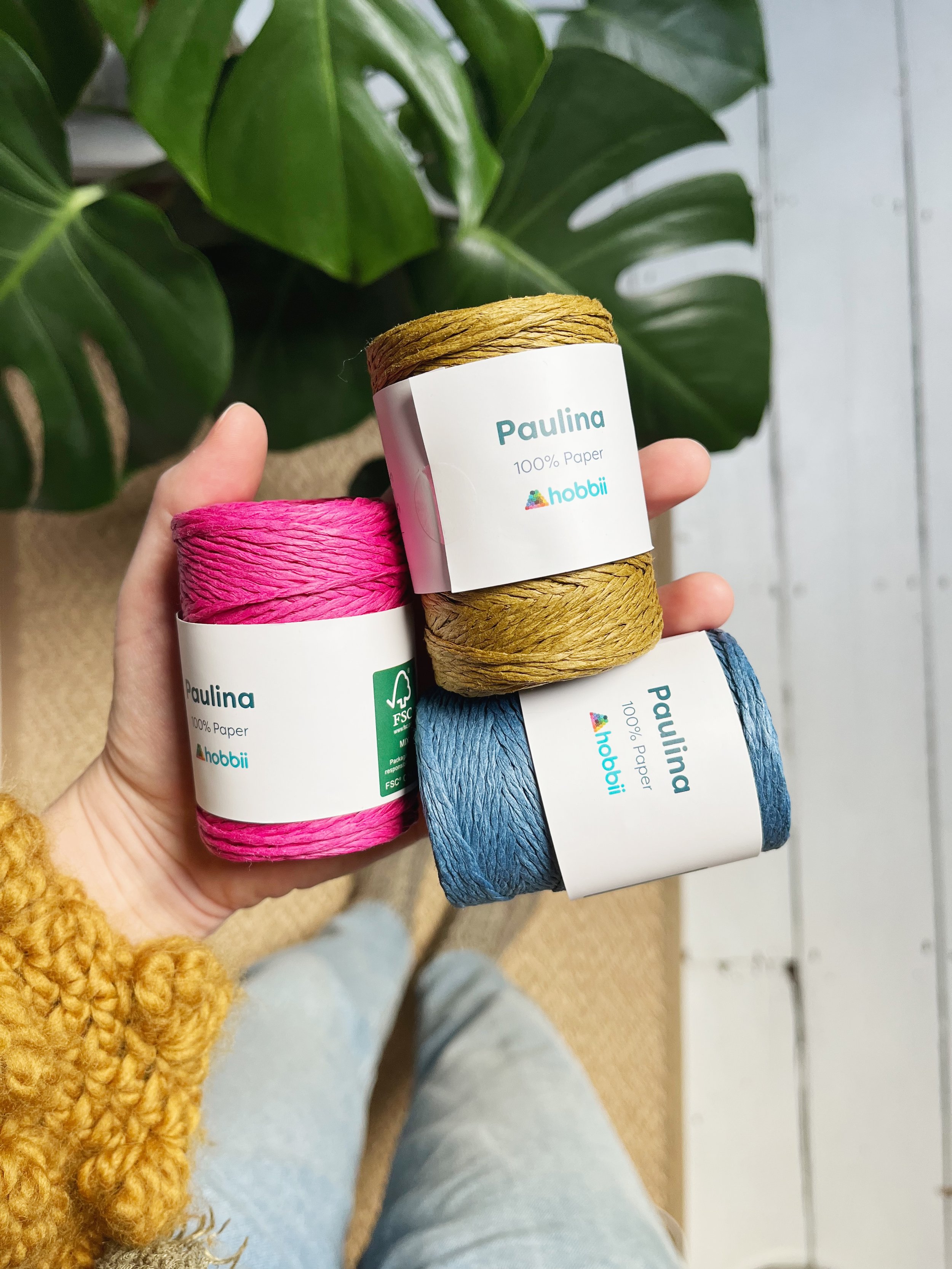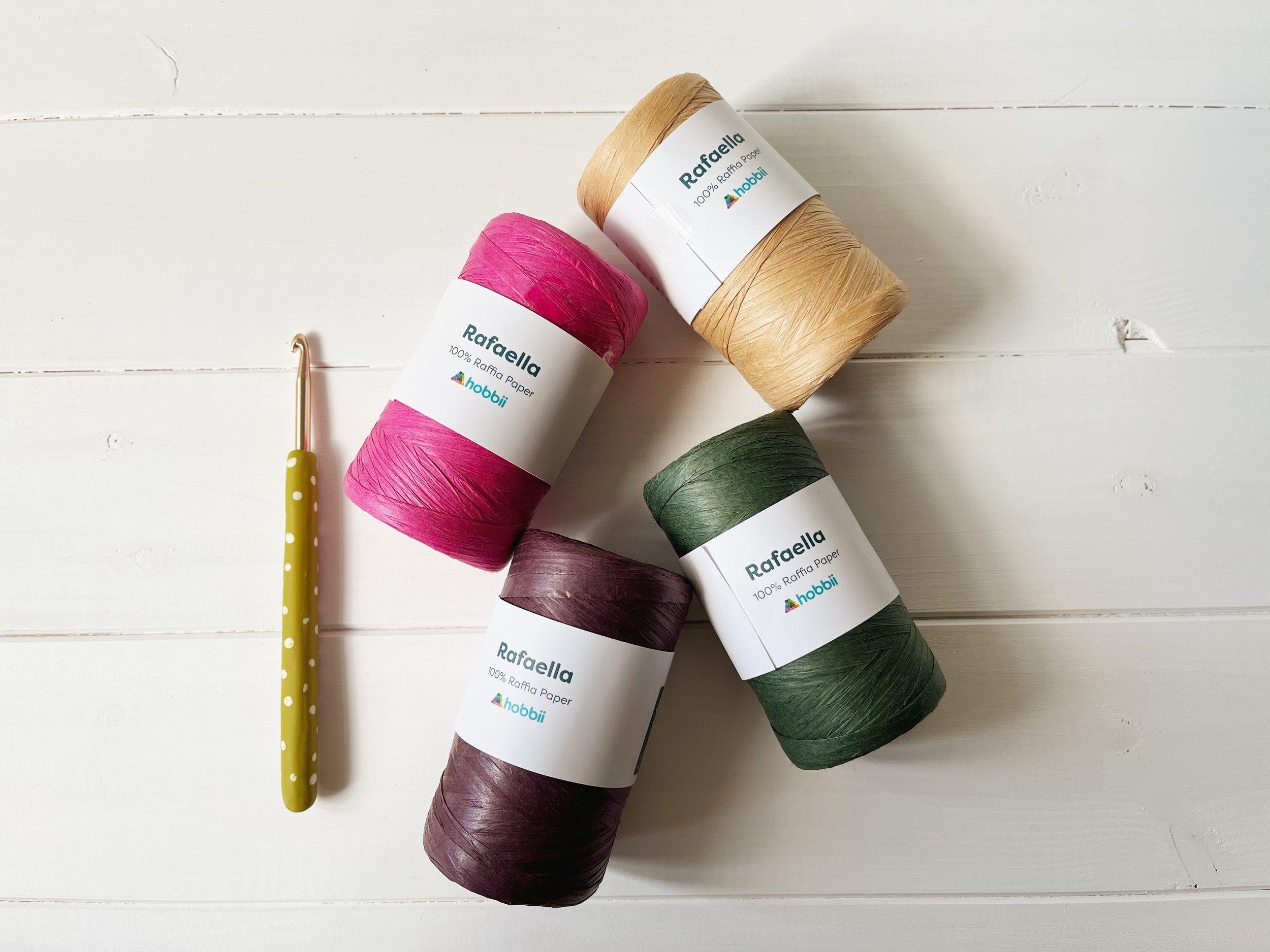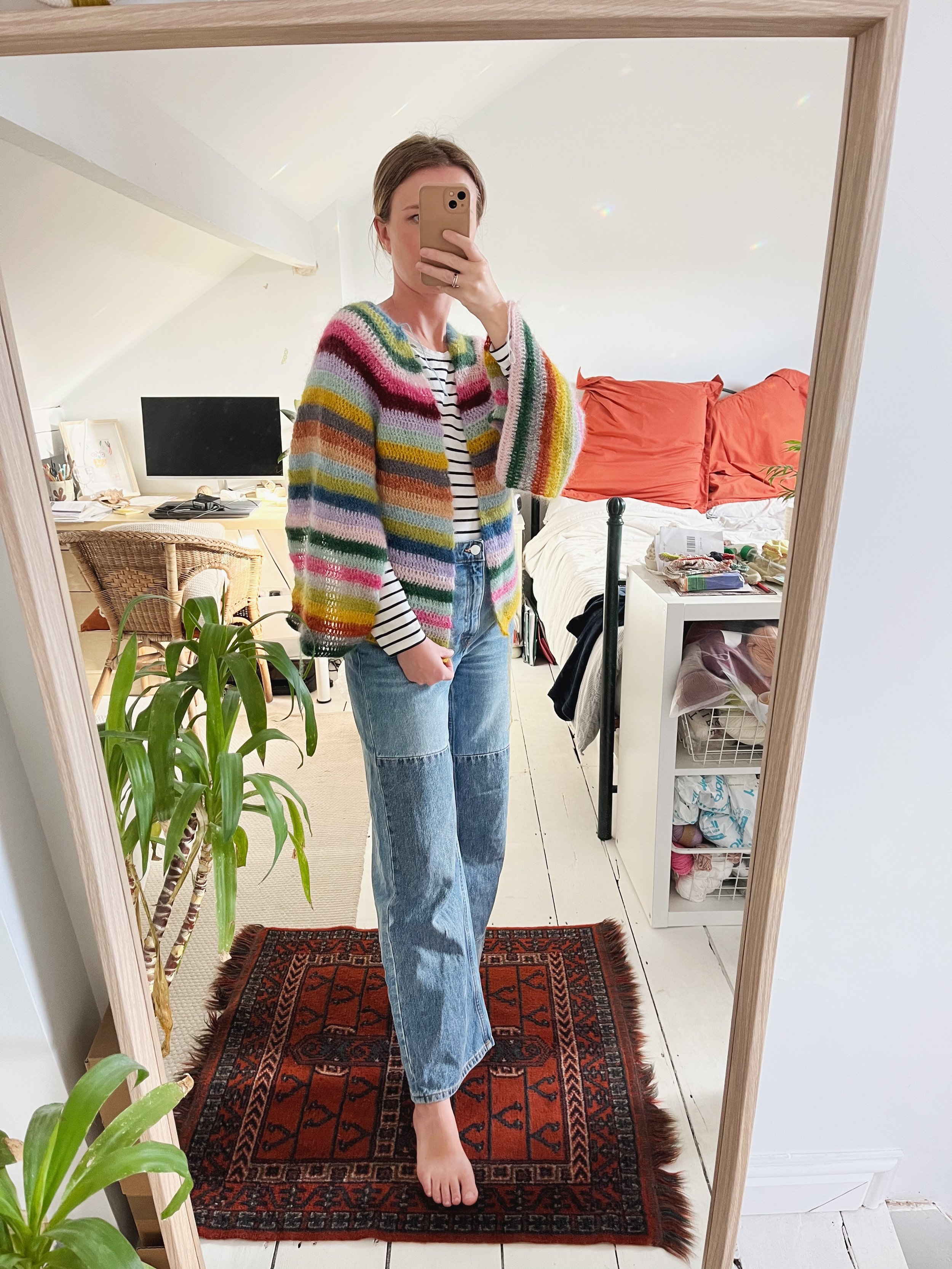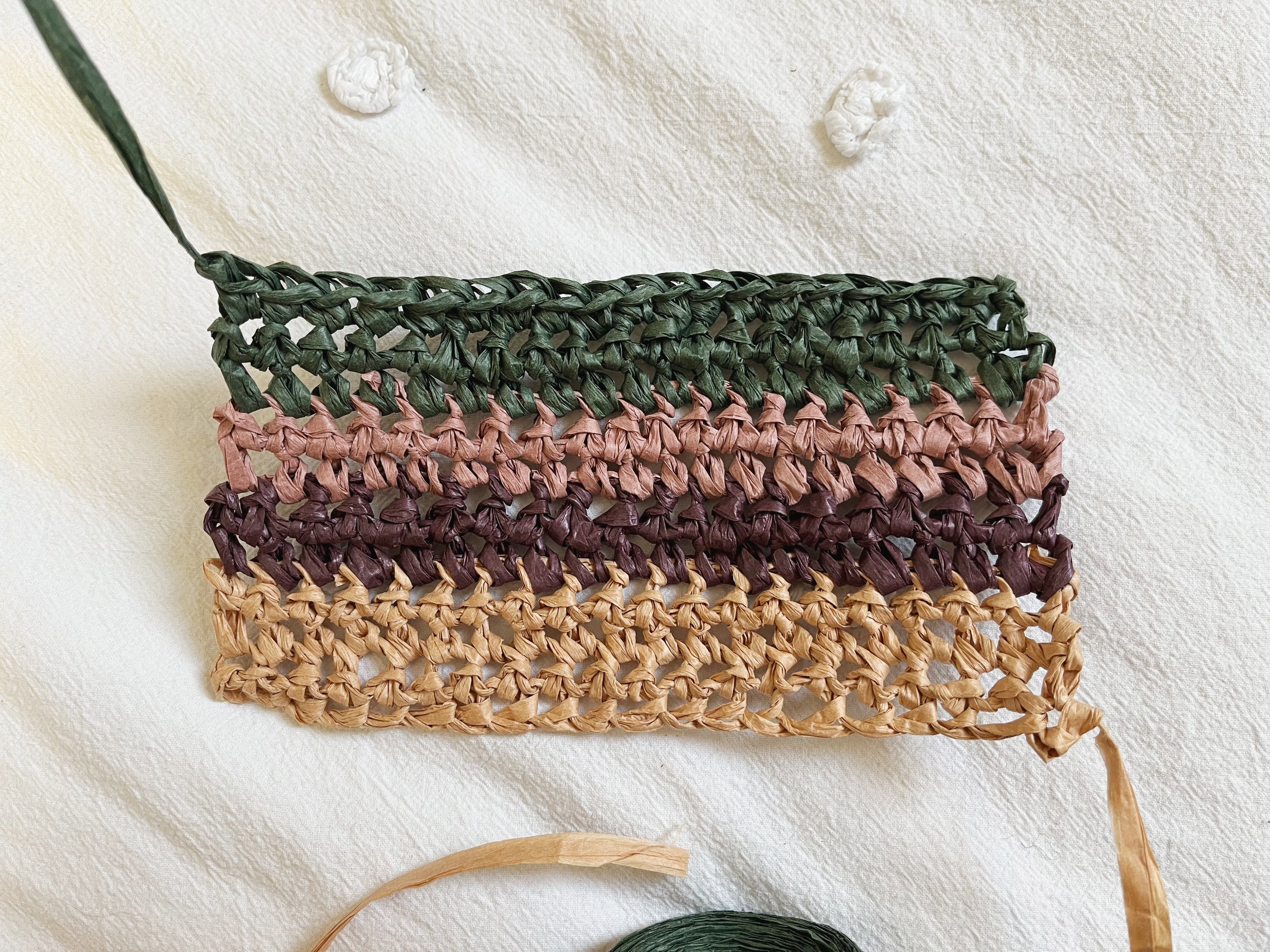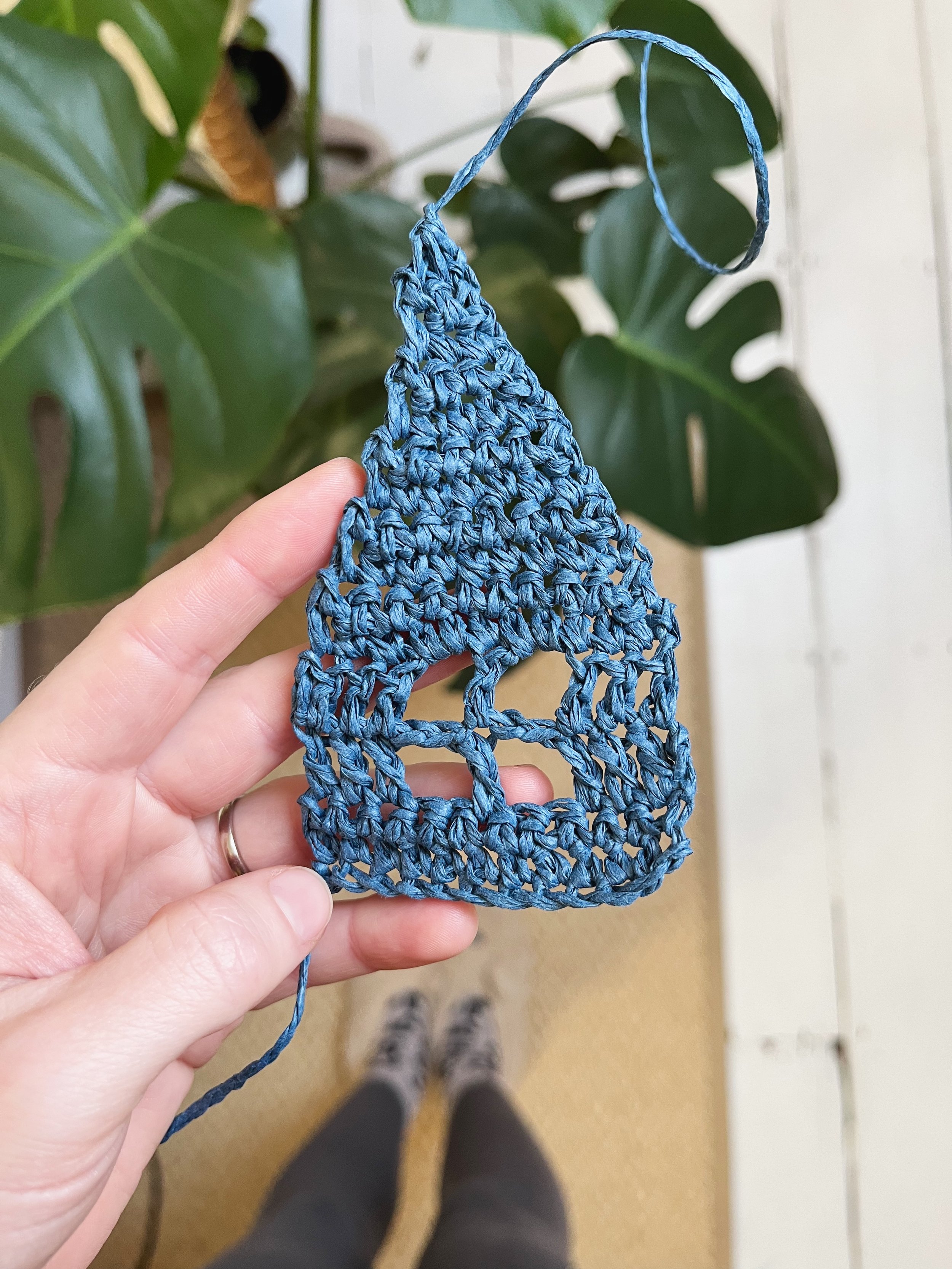Yarn review: Hobbii
Years ago I made the decision to only buy yarns that are made with natural fibres after realising how polluting some materials are to the environment. It is a complex arena, but I thought a logical first step for me in being more sustainable in my creative practices was to stop buying into plastic and petroleum-based yarns. Not only are the manufacturing of these types of yarns polluting, but they are not biodegradable and contribute to the worrying amounts of micro-plastics in our soils and seas.
With that said, I’ve been on a journey of experimentation with lots of different fibres and am still trying out new things all the time. When Hobbii reached out and asked if I’d like to review some of their yarns, I thought it would be a good opportunity to try out some new (to me) fibres from the huge selection they offer. Hobbii’s website is absolutely packed with choice, not only in different fibre-types but with colour too (which is the second most important factor to consider for me when choosing yarn!).
I decided to try out some new mohair colours (a new yarn obsession for me) as well as a couple of special yarns made from raffia and paper. Read on for my verdict…
Hobbii Friends Kid Silk
My first foray into mohair was with this yarn, and hence the obsession began! I love mohair. I’d heard horror stories of how difficult it was to use (and frog!) but honestly it’s not all that bad. Yes it isn’t the easiest of fibres to unravel when you make a mistake, but there are tips and tricks you can do to make life a little easier if you do end up needing to frog your work.
One of the best things about this yarn is it's versatility. It is super-fine, so you can make the most delicate and floaty of material from a single strand… or you can hold multiple strands together to create a more dense (yet still unbelievably soft) piece of fabric. Hobbii Friends Kid Silk also has a huge selection of 70 colours to choose from, so it was really easy for me to find the perfect shades for my next crochet project.
Doubling (or tripling) up on the strands also opens you up to a world of endless colour-combinations! So much fun.
Another fantastic feature of this yarn is that it’s included in the Hobbii ‘friends’ range, which includes a variety of other yarn weights and fibres. This helps you mix and match yarns whilst also knowing that the specific shades will match up perfectly. Mohair blends really well with other fibres and a single strand alongside some merino (for example) will create a magical halo effect to your project. I really do love mohair!
So far I’ve made a few different swatches in varying stitches, hook sizes and number of strands held together. The different results are really so inspiring - so many possibilities! After experimenting with this yarn I have a million-and-one ideas of things I want to design and make. First up was a colourful cardigan for myself, in simple stripes just to get the hang of working with mohair - and I am very happy with the results so far. It’s light, fluffy and surprisingly warm. Mohair is my new favourite for transitional pieces.
Hobbii ‘Paulina’ and ‘Rafaella’
I’d wanted to try out paper-yarns for the longest time, but often found that I couldn’t find the colours I wanted (for the price I wanted either). Again, Hobbii offers 18 different colours in both of their Rafaella and Paulina collection so it was easy for me to find a few different colours that I wanted to work with. I especially love their bright pink, aubergine and olive green shades and although they’re not marketed as mix-and-match, they do seem to work really well together.
Paper yarns are brilliantly versatile for all sorts of crafty projects (not just crochet!) and I’m sure I’ll be using these to jeuje-up a few Christmas presents this year! But the most obvious place to start, for me anyway, was a crochet bag. I have a few designs in mind, so I’ve made a few samples to help me decide which stitch pattern and colours to go for. I wasn’t sure how easy these yarns would be to work with and I imagined battling with inflexible threads. Although raffia flows through my fingers relatively easily, it is quite stiff to work with once on the hook and it makes a very durable material - which is what makes it so great for bags.
It is quite the workout crocheting with raffia and I had to give my hands a break after a few rows, but I am absolutely loving the effect. The colours look great together too, and as I’ve already said colour is very important to me when choosing yarns, so I’ll definitely be coming back to Hobbii and their Rafaella range for future raffia projects.
Paulina was slightly different to work with as it is a lighter yarn - a 4mm hook is suggested (whereas the raffia suggests 6mm), but as with the raffia it is very stiff and ‘sticky’ to pull through the loops, so crocheting with paper yarns is a bit of a workout for your hands. However, something I really love about this yarn is it’s stiffness as once you’ve made your stitches the resulting piece stays in place unlike any other material I’ve worked with so far. This makes it particularly great for any project where ‘stiffness’ is important.
With that in mind, I practiced making a little crocheted house (remember those) from this paper yarn. When I originally made these I would use fabric stiffener to help them keep their shape, but with Hobbii Paulina there was no need to do this - amazing. This saves so much time and effort. This yarn would be perfect for making little paper snowflakes at Christmas for decorations or present-toppers.
Hobbii definitely offer a lot of choice when it comes to yarn. In my experience the colours match up well to the colours you see on your screen, which is always helpful. I’ve really enjoyed trying out some new yarn fibres and colours and am excited to finish off my first mohair project. Paper-based yarns are also a revelation to me - I’d definitely recommend giving these a go for your next decorative project, whether you are a crocheter or not.
Thanks for sending me these lovely yarns to play with Hobbii.
